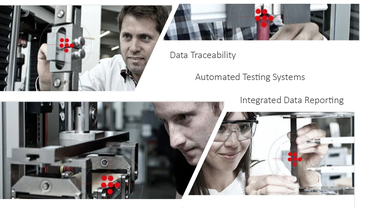Reducing Materials Testing Fraud: 3 Important Solutions
Fraud is a serious issue in materials testing, where falsely reported results can force costly product recalls, harm market reputation, and even put end users at serious safety risk.
In this blog, we provide an overview of fraud in materials testing, why it matters, and important solutions for reducing the risk of fraud.

Materials Testing Fraud is a Costly, Dangerous Issue for Manufacturers Today
The data generated by material testing processes is essential to understanding fundamental material properties, specifying the right components, and establishing safe operating limits. In this context, fraud can directly lead to a variety of mechanical issues which limit performance, reduce reliability, and even carry the risk of causing a sudden, catastrophic failure. Some recent examples demonstrate just how serious of an issue testing fraud is today.
- In 2021, the New York Times reported on another chronic source of fraud. In this case, a Washington-based metallurgist falsified tests on over 240 steel products over a span of 40 years. Cast steel parts were ultimately used in US Navy submarines, putting sailors at risk.
In this case, the method of the fraud was astoundingly simple. The perpetrator “would sometimes alter the first digit of the test results to increase weights by 10 or 20 foot-pounds on tests that determine the toughness of the steel and the ‘amount of dynamic force’ it can withstand.”
- In 2018, the third largest steel manufacturer in Japan admitted to committing systematic data fraud, a practice that Reuters reports went on for almost five decades.
In this case, around 500 customers suffered the consequences, creating huge disruptions in global supply chains as a variety of manufacturers struggled to sort out the mess. The steel maker found itself mired in years of legal liability.
These cases show why the pressure to reduce testing fraud is twofold. Internally, manufacturers need to prevent fraud in order to protect quality, limit risk, and keep end users safe. Externally, manufacturers face the need to ensure that their own suppliers are conducting proper tests and recording accurate data.
Key Capabilities for Protecting Against Fraud
The right materials testing capabilities can play a key role in reducing fraud by protecting the integrity of both the measurement procedure itself and the data that is subsequently generated. These same capabilities can drive broader value for manufacturers, helping improve testing quality (and, in many cases, even streamline the testing process to increase throughput).
Some of the most important capabilities include:
- Data Traceability
First and foremost, providing full data traceability is crucial for documenting results and protecting them from alteration. In more and more industries, traceability is not only a recommended protection, but a regulatory requirement. By tracking every step taken during the testing process, fully traceable software provides the only avenue for generating truly manipulation-proof results.
For an example of a robust testing traceability solution, you can learn more about tamper proof results in ZwickRoell’s testXpert III software here.
- Automated Testing Systems
Automation attacks the fraud problem from multiple angles. First, by minimizing human touchpoints, automated testing systems directly reduce the opportunities for fraud (and innocent error). Today, testing systems can be automated in virtually every stage, from specimen handling to final data reporting, dramatically reducing the need for human input while keeping data walled in to a safe, end-to-end digital journey.
More broadly, automated systems can help reduce the pressure on testing technicians to complete high volumes of tests involving monotonous work, reducing the temptation to report false results. We provide more details on materials testing automation here.
- Integrated Data Reporting
Today, testing systems are capable of automatically recording data as tests are completed in real-time, storing this data either onsite or in the cloud. Taking data entry out of the equation eliminates one of the most straightforward avenues for fraud. Through direct integration with ERP systems, databases, or other external devices, data can be collected without ever leaving its digital journey to go “pen-to-paper,” a crucial protection against data manipulation.
We provide more information on the detailed capabilities testXpert III uses to achieve safe communication with any IT system here.
If you have specific questions about how ZwickRoell testing equipment can help protect against fraud while supporting a more efficient testing process, please reach out to our team using the form below.